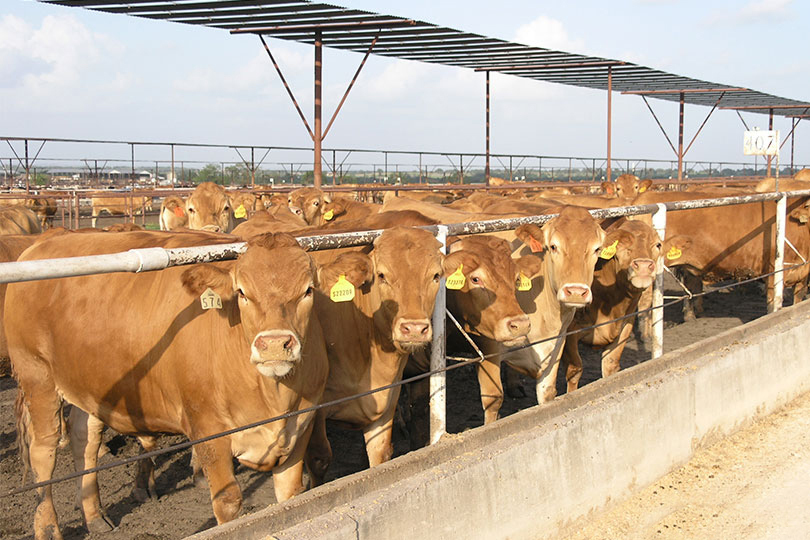By Emmy Powell
Communications Specialist
Live cattle and retail beef prices continue to trend up as tight supplies and strong demand drive the market.
Randy Blach, CEO of CattleFax, told the Texas Farm Bureau Radio Network that herd expansion remains sluggish.
“Expansion of the beef cow herd continues to be very slow,” Blach said. “Demand continues to be very strong—37-year highs in beef demand. We’ve got record prices and record profitability in our industry, and it’s a combination of both those things.”
That combination is reflected in the boxed beef cutout values. According to the U.S. Department of Agriculture (USDA), the choice boxed beef cutout is up 19% from a year ago.
USDA also reports rising cattle prices at auction. The National Daily Cattle and Beef Summary Report shows feeder steer prices are up 5% to 10% since mid-April. Overall, feeder and live cattle prices are 20% to 25% higher than a year ago.
Live steer prices have climbed more than 10% since mid-April, averaging $230.70.
“While the beef cattle market is extremely high, ranchers remain cautious,” Tracy Tomascik, Texas Farm Bureau (TFB) associate director of Commodity and Regulatory Activities, said. “You never know what the market could do. This is a good time for ranchers to evaluate their farm finances and prepare for times when we experience a market downturn.”
The cattle inventory in Texas and other states has taken a hit over the last few years due to prolonged drought conditions, but favorable pasture conditions have ranchers optimistic as they look to slowly rebuild their herds.
Blach noted the number of cattle harvested in April and May was significantly lower than in previous years.
“The number of cattle that we harvested in the months of April and May in 2019, 2021 and 2022, compared to what we’re harvested in the same 60-day time period this year, you’re looking at harvest levels that are between 60,000 and 90,000 head a week less than they were,” he said. “Fed cattle supplies are tighter. When we fast forward, when we look at 2026 just based on slow expansion in the herd, we would still expect that fed slaughter would be down an additional 600,000 to 700,000 head next year.”
As summer progresses, cattle prices are expected to remain elevated, supported by strong consumer demand and a limited supply of market-ready cattle. But ranchers are proceeding with caution, balancing current opportunities with long-term planning.


Leave A Comment